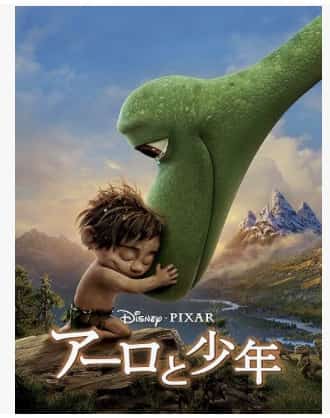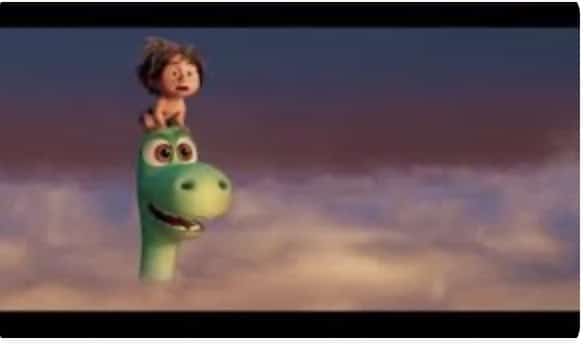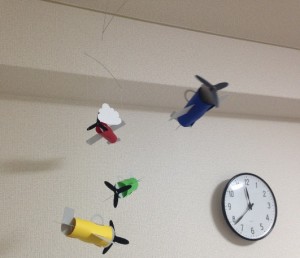Why Pixar’s Clouds Matter: A Science Teacher’s Lesson from “The Good Dinosaur”
This is Ken Kuwako, the Science Trainer. Every day is an experiment!
“What if the dinosaurs never went extinct?” That’s the fascinating world depicted in the Disney/Pixar film, The Good Dinosaur. Have you all seen it yet? I’m a dinosaur fan, of course, but I went to see it on the big screen because I heard a rumor that “the natural scenery rendered in CG is breathtaking.”

While the heartwarming story of Arlo, the timid dinosaur, growing up is wonderful, I (as a science teacher) found myself completely captivated by the movie from a totally different perspective. It was the depiction of “nature” in CG. Specifically, the “clouds” in the sky.
Why did Pixar put so much effort into clouds? From a scientific point of view, it reveals an amazing technological evolution and, surprisingly, an important hint about how we should approach our own work for the future.
A Heartwarming, Classic Story
The plot feels very much like a classic Disney (Pixar) film. There are no huge surprises, just a solid, conventional story progression. And honestly, that’s what makes it so reassuring and enjoyable.
Watching Arlo the dinosaur overcome his trials and grow, you can’t help but feel, “Maybe we, too, can still do more.” And the budding friendship between him and the human boy is incredibly heartwarming.
As for a rating, out of 5 stars, I’d personally give it ☆4.
The “Clouds” That Changed the Game for CG
So, what was that “extra something” that pushed it to 5 stars for me? As the advertising promised, it was the stunning depiction of nature. The level of detail in the CG is just incredible. I took a picture of a poster at the theater; take a look.

If you look closely, you can even see the chapped texture of his lips.

They’ve even modeled the molars deep inside his mouth.
But what impressed me most of all was the changing weather. The weather shifts to match the protagonist Arlo’s internal state—sometimes it’s crisp and clear, other times it’s a raging storm—and all of it is rendered beautifully in CG.
I wondered, “Am I just obsessed with the weather because my specialty is atmospheric physics?” But it was just so realistic and beautiful! When I got home and looked it up, I found out that the film’s creators put an extraordinary amount of effort into depicting the “clouds.” I knew it!

Pixar’s Challenge: Passing the Technological Baton
Do you know why it’s so difficult to realistically render “clouds” in CG? Clouds aren’t just flat white cotton balls. They are 3D objects, collections of countless water droplets or ice crystals. That unique “fluffiness” and “grandeur” comes from the complex way light reflects off and passes through (or scatters within) them.
With the technology they had back in the days of Toy Story, they couldn’t create these complex clouds, so the sky was often just a flat, solid blue.
However, for The Good Dinosaur, they apparently used multiple layers of CG to give the clouds a true 3D, volumetric appearance. That’s why they could create realistic clouds where light shines through or casts shadows, just like the real thing.
When you look at Pixar’s work, you see that every film has a “technical theme” or challenge. For Finding Nemo, it was the challenge of rendering water in CG. For Monsters, Inc., it was the challenge of rendering Sully’s fur. They always set a new theme for realistic CG representation and tackle it. And this time, that theme was “clouds.”
The truly amazing (and slightly terrifying) part is that these solutions become “ingredients” for the next CG animated film. The challenge of rendering fur from Monsters, Inc. was passed on to the rendering of the buffalo in The Good Dinosaur. The water effects perfected in Nemo were clearly reflected in the raging river that sweeps Arlo away.
It’s this “accumulation of technology” that likely allows them to create such emotionally moving films, even on tighter budgets, as they build on past successes.
What Pixar Teaches Us About “Future-Proofing” Our Work
I personally prefer the warmth of hand-drawn animation, like Studio Ghibli’s, but when you consider budget and efficiency, the Pixar model is probably more sustainable in the long run. They are practicing the art of “doing work today that connects to the future.”
Seeing this attitude, I felt strongly that teachers need to adopt the same approach. A teacher’s daily schedule is incredibly hectic. But as educators, we need to find ways to reduce that busywork and create a little breathing room in our days. Why? To respond to the unpredictable things that always come up, like sudden student issues.
Therefore, today’s lesson planning needs to connect to “future lessons,” and we must find ways to avoid having to do the exact same prep work again next year.
When I first became a teacher, I hated using worksheets, so I mainly used the blackboard for my lessons. Now, however, I use a mix of worksheets and the blackboard. The reason I changed is that I realized creating worksheets is work that connects to the future. Once you make one, you can improve it for the following year, or you can share it with other teachers. I know worksheets aren’t always the best method, but creating them still helps make my job easier in the future.
In fact, one of the reasons I compile science topics on this blog is to find material for casual chats with students and to accumulate experiment ideas to use in class. There’s still so much I can’t do or haven’t done. But after seeing this movie, for some reason, I felt inspired to imitate Pixar’s work ethic and try to transform my immediate tasks into work that builds toward the future!
Contact & Inquiries
Bringing the wonder and fun of science closer to you! I put together easy-to-understand explanations and fun science experiments you can do at home. Please search for various topics! ・The content from my “Science Notes” is now a book. Click here for details. ・To learn more about me (Ken Kuwako), click here. ・For all requests (writing, lectures, experiment workshops, TV supervision, appearances, etc.), please click here. ・Follow me on X (Twitter) for updates!
![]() I post experiment videos on my “Science Notes Channel”!
I post experiment videos on my “Science Notes Channel”!


